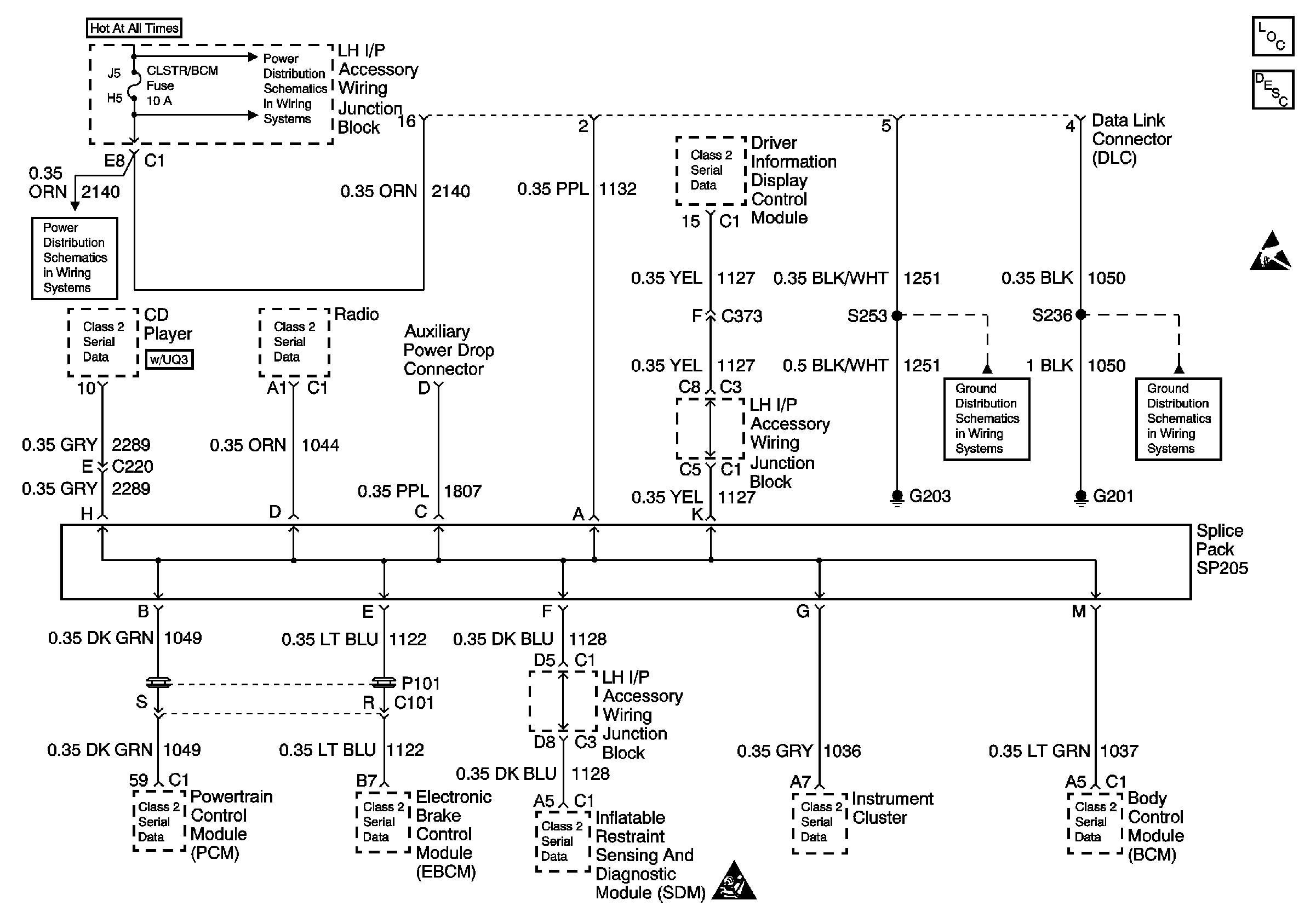Circuit Description
The powertrain control module (PCM) uses the rough road information to enhance the misfire diagnostic by distinguishing crankshaft speed variations caused by driving on rough road surfaces from variations caused by true misfires. The electronic brake control module (EBCM)/electronic brake traction control module (EBTCM) transmits rough road information based on inputs from the wheel speed sensors. If a loss of communication occurs which causes the PCM not to receive rough road information while DTC P0300 is requesting the MIL, DTC P1381 will set.
Conditions for Running the DTC
| • | The engine load is less than 87 percent. |
| • | The engine speed is less than 5000 RPM. |
| • | The vehicle speed is greater than 16 km/h (10 mph). |
| • | A misfire DTC is occurring and requesting the MIL to be illuminated. |
Conditions for Setting the DTC
The PCM is detecting a loss of communication with the EBCM / EBTCM for at least 5 seconds.
Action Taken When the DTC Sets
| • | The control module stores the DTC information into memory when the diagnostic runs and fails. |
| • | The malfunction indicator lamp (MIL) will not illuminate. |
| • | The control module records the operating conditions at the time the diagnostic fails. The control module stores this information in the Failure Records. |
| • | The driver information center, if equipped, may display a message. |
Conditions for Clearing the DTC
| • | A current DTC Last Test Failed clears when the diagnostic runs and passes. |
| • | A history DTC clears after 40 consecutive warm-up cycles, if no failures are reported by this or any other non-emission related diagnostic. |
| • | Clear the DTC with a scan tool. |
Test Description
The numbers below refer to the step numbers on the diagnostic table.
-
Ensures that the EBCM/EBTCM is capable of transmitting serial data on the Class II serial data circuit.
-
Tests the Class II serial data circuit at the EBCM/EBTCM for correct voltage.
Step | Action | Value(s) | Yes | No |
|---|---|---|---|---|
Schematic Reference:
| ||||
1 | Did you perform the Diagnostic System Check-Engine Controls? | -- | Go to Step 2 | |
Can ABS data be displayed? | -- | Go to Step 3 | Go to Step 4 | |
3 | Test the serial data circuit for an open or a poor connection between the PCM and the EBCM. Refer to Testing for Continuity , and Testing for Intermittent Conditions and Poor Connections in Wiring Systems. Did you find and correct the condition? | -- | System OK | Go to Intermittent Conditions |
Does voltage vary between the specified values? | 1-5 V | Go to Step 5 | Go to Step 6 | |
5 | Inspect for a poor connection at the EBCM. Refer to Testing for Continuity , and Testing for Intermittent Conditions and Poor Connections in Wiring Systems. Did you find and correct the condition? | -- | Go to Step 7 | Go to Step 6 |
6 | Test for an open in the serial data circuit to the EBCM. Refer to Wiring Repairs in Wiring Systems. Did you find and correct the condition? | -- | Go to Step 7 | Go to Diagnostic System Check - ABS in Antilock Brake Systems |
7 |
Can ABS data be displayed? | -- | System OK | Go to Step 4 |

